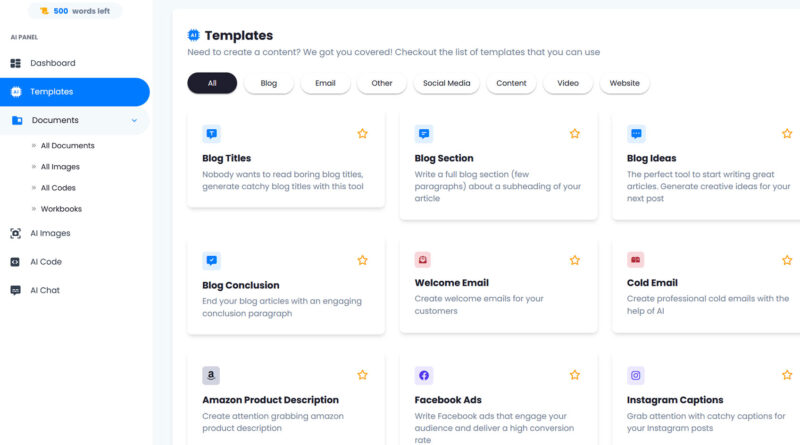How to Choose the Right AI Tools for Your Needs
How to Choose the Right AI Tools for Your Needs
In the rapidly evolving landscape of technology, Artificial Intelligence (AI) has emerged as a transformative force across industries. From healthcare and finance to marketing and manufacturing, AI-powered tools and solutions are becoming integral to enhancing efficiency, making informed decisions, and driving innovation. However, with the plethora of AI tools available, selecting the right ones for your specific needs can be a daunting task. This article will guide you through a comprehensive process to help you choose the most suitable AI tools for your requirements.
Understand Your Goals and Needs
The first step in choosing the best AI tools is to clearly define your goals and needs. What specific challenges are you looking to address? Are you aiming to automate tasks, gain insights from data, improve customer experiences, or enhance product recommendations? Understanding your objectives will narrow down the type of AI tools you should consider.
Assess Available Resources
Before diving into the AI tool selection process, it’s important to assess your available resources. This includes not only your budget but also the expertise of your team. Some AI tools might require extensive technical knowledge to implement and maintain, while others are designed for user-friendly deployment. Be realistic about what you can handle in terms of financial investment, time commitment, and skill level.
Research Different AI Tools
The AI landscape is diverse, offering a range of tools, frameworks, and platforms. Research and identify the options that align with your goals and resources. Some popular categories of AI tools include:
- Machine Learning Libraries and Frameworks: Tools like TensorFlow, PyTorch, and scikit-learn are widely used for developing machine learning models. They provide a foundation for building custom AI solutions.
- Pre-built AI Platforms: Platforms like IBM Watson, Microsoft Azure AI, and Google Cloud AI offer pre-built AI capabilities, making it easier to integrate AI into your applications without extensive coding.
- Natural Language Processing (NLP) Tools: If your goal involves working with text data, NLP tools like spaCy, NLTK, and the Hugging Face Transformers library can assist in tasks like text classification, sentiment analysis, and language generation.
- Computer Vision Tools: For tasks involving images and videos, tools like OpenCV and YOLO (You Only Look Once) are useful for object detection, image recognition, and more.
- Automated Machine Learning (AutoML) Platforms: These platforms, such as AutoML by Google and DataRobot, enable non-experts to create machine learning models without extensive coding.
- Data Analytics and Visualization Tools: Tools like Tableau, Power BI, and Plotly help in analyzing and visualizing data to gain insights.
Consider Scalability and Integration
When selecting AI tools, consider the scalability of the solution. Will the tool be able to handle increased data volumes and user demands in the future? Additionally, ensure that the tool can integrate seamlessly with your existing systems and workflows. Compatibility with your technology stack is crucial to avoid disruptions and maximize efficiency.
Evaluate Performance and Accuracy
The performance and accuracy of AI tools can significantly impact the outcomes of your projects. Before making a decision, test the tools thoroughly using real or simulated data. Measure their performance against relevant metrics and benchmarks. For example, if you’re evaluating a machine learning model, metrics like accuracy, precision, recall, and F1 score are important indicators.
Check for Customization and Flexibility
Different projects have unique requirements, and the ability to customize AI tools is often crucial. Evaluate whether the tool can be tailored to suit your specific needs. This might involve modifying algorithms, adjusting parameters, or adding custom features.
Consider Ethical and Regulatory Implications
AI technologies come with ethical and regulatory considerations. Depending on your industry, you might need to ensure that the selected AI tools comply with data privacy regulations and ethical standards. Bias detection and mitigation, transparency, and accountability are also important aspects to consider.
Seek User Feedback and Reviews
User feedback and reviews can provide valuable insights into the real-world performance of AI tools. Look for case studies, testimonials, and online discussions related to the tools you’re considering. This can give you a better understanding of how these tools have been utilized in practical scenarios.
Plan for Training and Support
Even the most user-friendly AI tools might require training and support, especially during the initial stages of implementation. Evaluate the availability of training materials, documentation, online tutorials, and customer support options offered by the tool’s provider.
Cost Analysis
While cost should not be the sole determining factor, it’s essential to have a clear understanding of the pricing structure associated with the AI tools you’re considering. Some tools might offer free tiers with limited features, while others require a subscription or pay-as-you-go model. Factor in both initial costs and ongoing expenses.
Conduct Pilot Testing
Before fully committing to an AI tool, consider conducting a pilot test. Implement the tool on a smaller scale to gauge its performance, integration capabilities, and suitability for your needs. This step can help you identify any potential challenges or limitations early on.
Stay Informed About Updates and Trends
The field of AI is rapidly evolving, with new tools and technologies being developed regularly. It’s crucial to stay informed about the latest trends, updates, and advancements in the AI landscape. This will ensure that your chosen tools remain relevant and effective in the long term.
Conclusion
Selecting the best AI tools for your needs requires a thorough understanding of your goals, available resources, and the capabilities of different tools. By following a systematic approach that involves research, evaluation, testing, and consideration of various factors, you can make informed decisions that will drive successful AI implementations. Remember that the choice of AI tools is not a one-size-fits-all decision; it should be tailored to your specific objectives and requirements for optimal outcomes.
